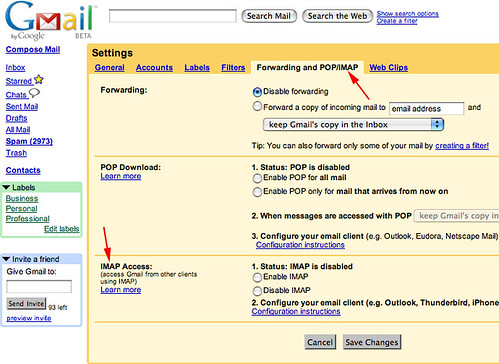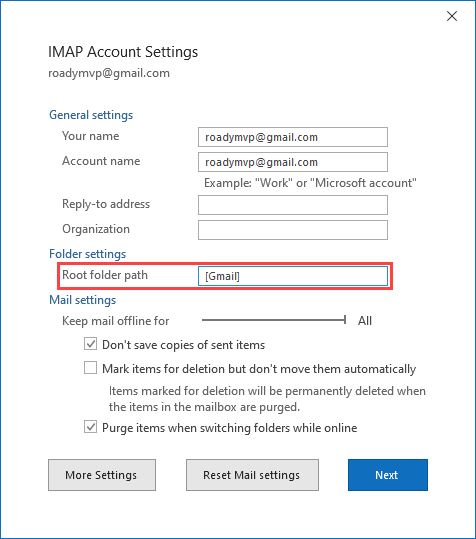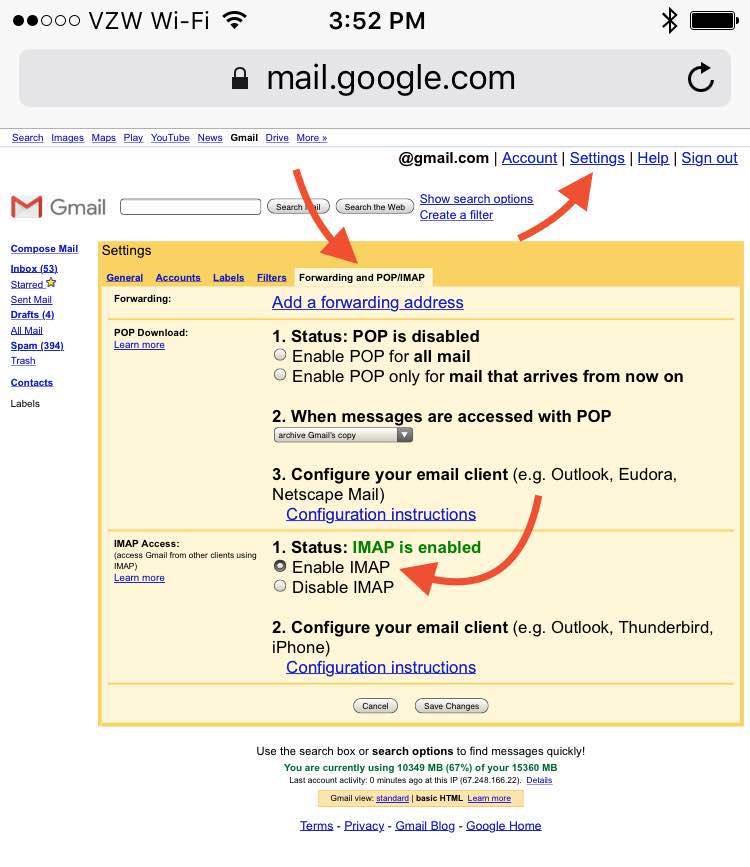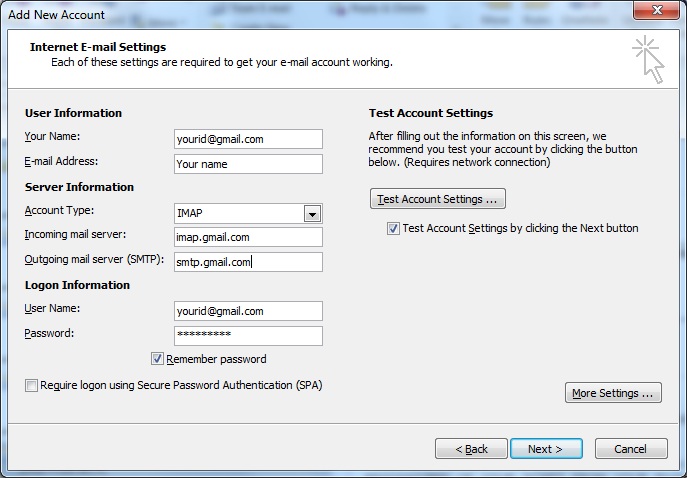Imap Gmail. In the Gmail web interface, click the cog icon to open the sidebar, then press See all settings. In the IMAP access section, select Enable IMAP. Open Gmail in a web browser. Here's how you can check if IMAP or POP is turned on: Log in to your Gmail account on a computer. Select the Settings gear in the upper-right corner. Click on forwarding and POP/IMAP, and scroll down to IMAP. IMAP, POP, and SMTP use the standard Simple Authentication and Security Layer (SASL), using the built-in the native IMAP AUTHENTICATE, POP AUTH, and SMTP AUTH commands, to authenticate users. Click the Settings gear icon in the top right and then choose the See all settings option.
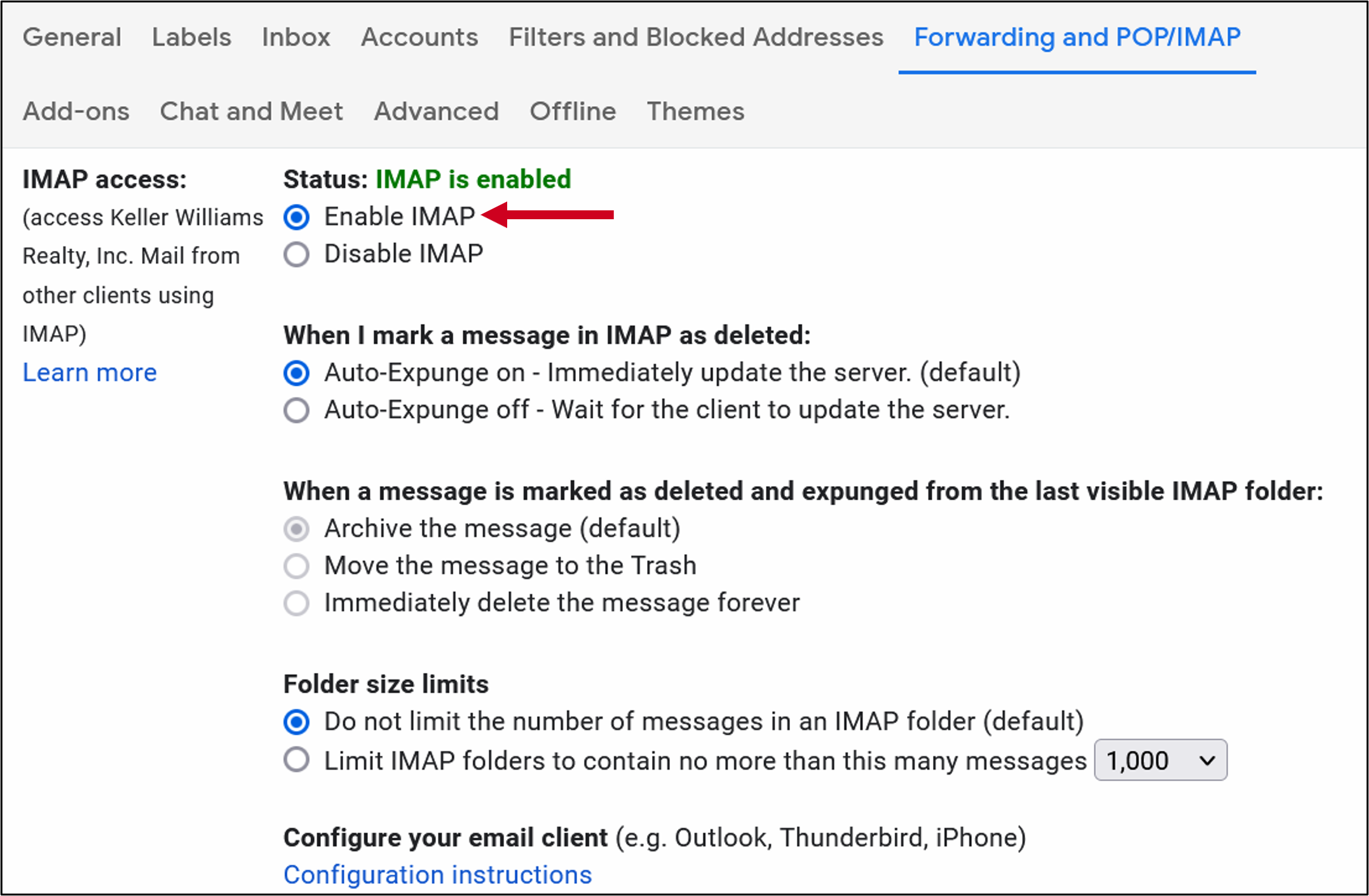
Imap Gmail. Open Gmail in a web browser. Developers integrating Gmail features into their web or mobile apps may instead want to use the RESTful Gmail API. In the top right, click Settings See all settings. Consulter Gmail via d'autres plates-formes de messagerie. Select Security in the left sidebar. Imap Gmail.
On the iPhone home screen, open Settings.
If Outlook won't accept your password and you know you're using the right password for your Gmail account, you might have an older version of Outlook that doesn't currently support this faster Gmail.
Imap Gmail. The IMAP Account Settings window will open, showing the Incoming mail settings. Open Gmail in a web browser. Click Settings > Forwarding and POP/IMAP. To make your Gmail messages accessible by Microsoft Outlook, you need to enable it for IMAP. Make sure that the folders are set to show in IMAP.
Imap Gmail.


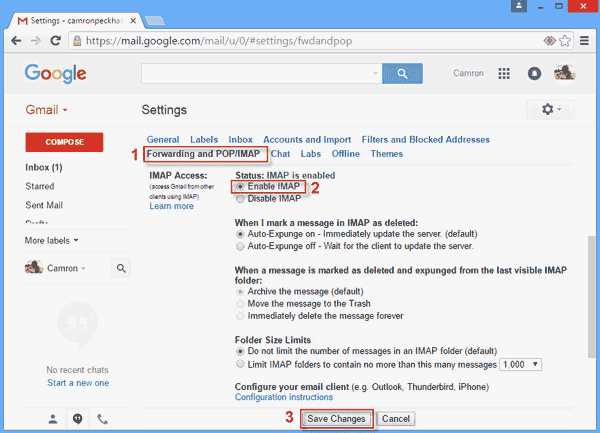
:max_bytes(150000):strip_icc()/001-how-to-access-a-gmail-account-with-any-email-client-via-pop-4103715-a988658a0c8948eb819d4d7f79f8be8a.jpg)

